Don’t you find beautiful custom-made clocks interesting? Throughout history, the creation of a beautiful clock has been a skill and art form meticulously studied. Master instructing apprentice, handing down secrets not to be shared with the competition. Who could become the most renowned clock maker of their time? Centuries ago, the creation of a unique work of art in the form of a beautiful clock was not just commissioned as a time measuring device. These clocks were also seen as symbols of status. A measure of the wealth or technological advancement of the owners or developers of the clock, in comparison to other clockmakers in other nations. Which brings me to the Prague Astronomical Clock.
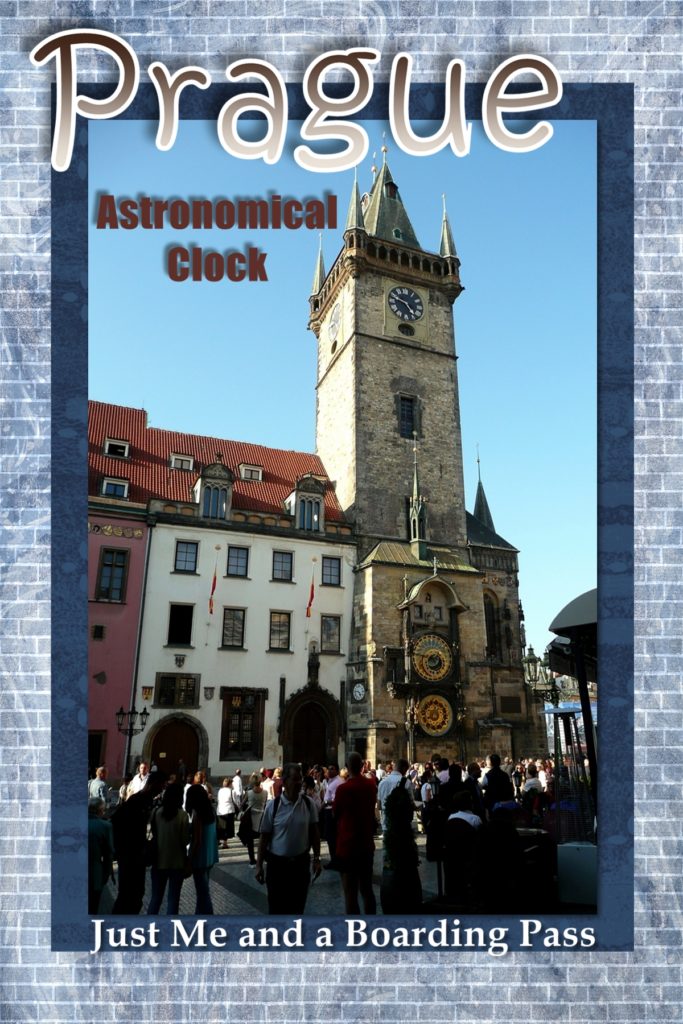
What is an astronomical clock?
An astronomical clock or Orloj, is a clock with extra mechanisms and dials that can display astronomical information in addition to the time of the day. Information such as the relative position of the sun, the phase of the moon, and the constellations of the zodiac.
The Prague Astronomical Clock is one of the most complex and intricate clocks I have ever seen. Known as the Orloj, the clock is comprised of three main components. The closest to the ground is the calendar dial. On top of that
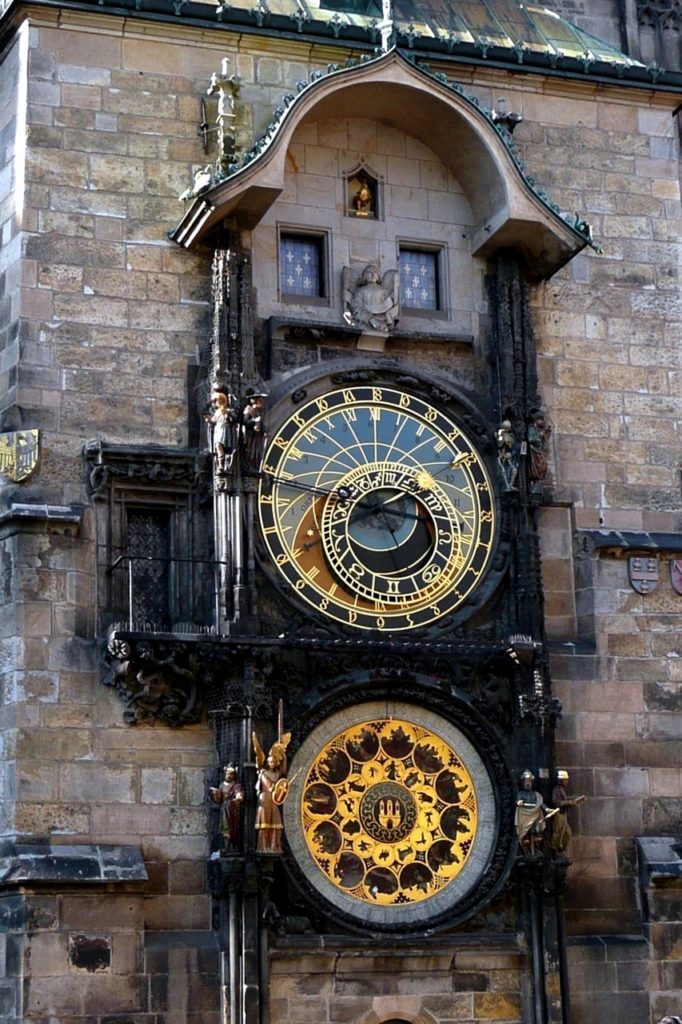
Constructed in 1410, the oldest part of the Orloj is the mechanical clock and astronomical dial. This was made by a clockmaker named Mikuláš of Kadan. He was assisted by Jan Šindel who was a professor of mathematics and astronomy at Charles University. The Prague Orloj was one of a number of complex astronomical clocks designed and constructed during the 14th and 15th centuries, soon after the invention of the mechanical clock.
Procession of the apostles
Not only is this clock intricately complex, but it also puts on a show every hour to the crowd of people eagerly waiting in Old Town Square. On the hour (between 0900 – 2100) the apostles will start their procession, blessing the city as they each appear in turn through the little windows above the clock.


Zoom in on the roof and you’ll see the little dragon gargoyle.
Clock and astrolabe
The outer ring of the clock has glyphs representing ancient Czech time. Next, there are roman numerals used to indicate 24 hour time.
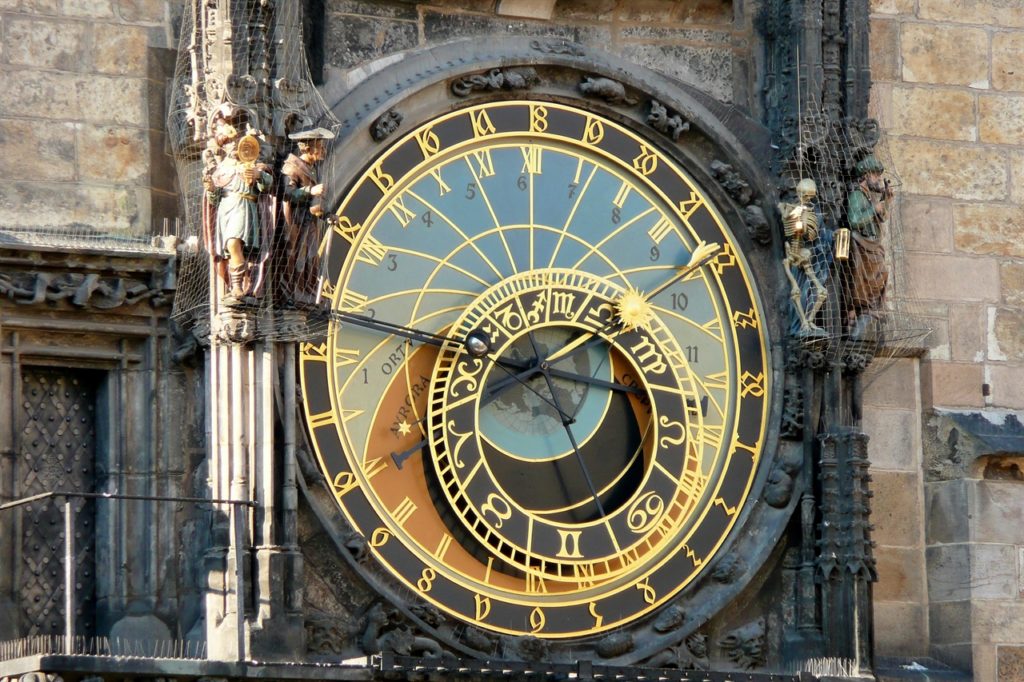
A circular world map is shown in the centre of the clock. The astrolabe and clock combine to show the time of
You will find the four vices standing on either side of the astronomical clock dial. On the left stands Vanity (with a mirror) and Miser (or greed with a money bag). To the right, Death (the skeleton) stands with the Turk (pagan invasion). These figures are partially animated when the procession of the apostles takes place.
Calendar Dial
Later, the calendar dial was added, with 12 painted medallions representing the 12 months of the year. The medallions show characters in the fields throughout the various seasons. Surrounding the medallions is a church calendar divided into 365 days. A segment for each day of the year. The individual days are said to have the names of saints and fixed holidays inscribed on them.
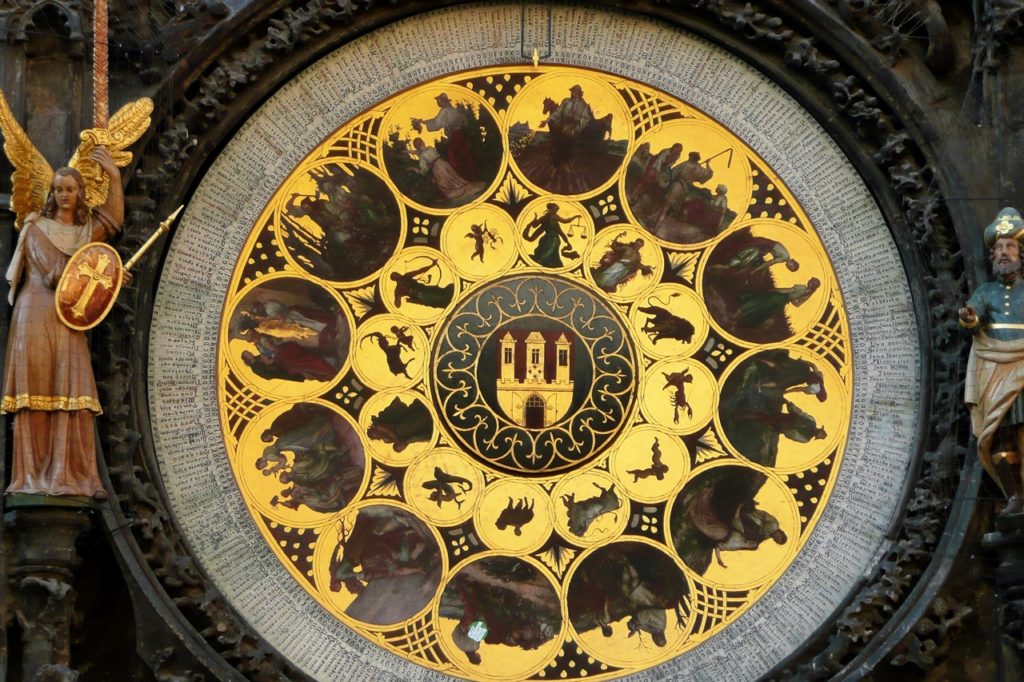
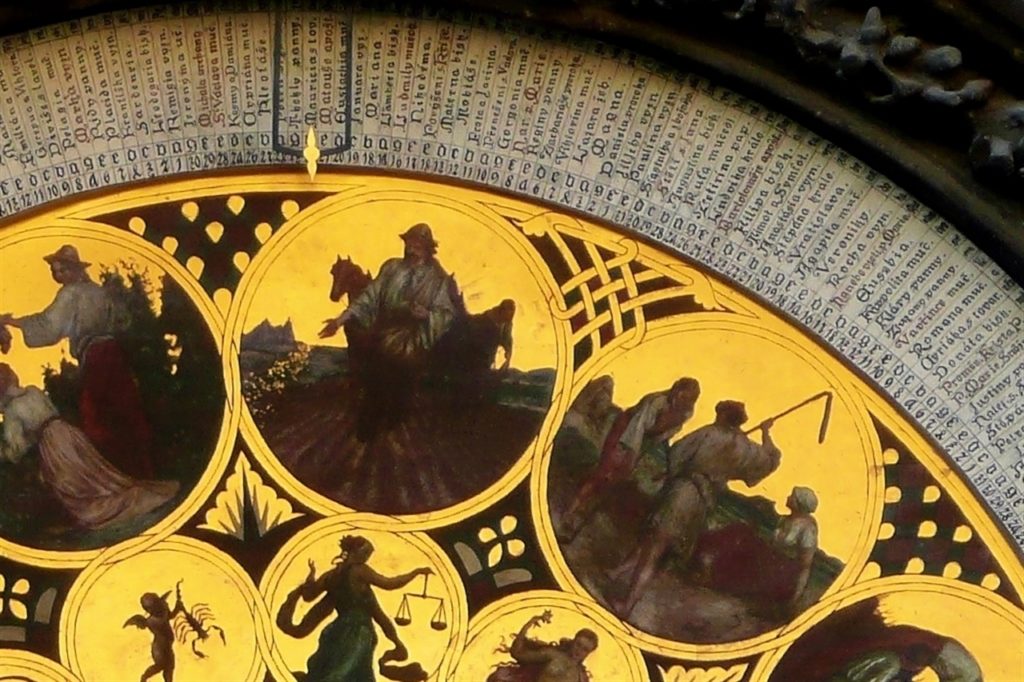
Are these daily segments hand written??
The dial rotates, keeping the current day at the top of the calendar ring.
Standing beside the calendar disk are the four virtues represented as immobile figures. On the left stand a chronicler and an angel. To the right stand an astronomer and a philosopher.
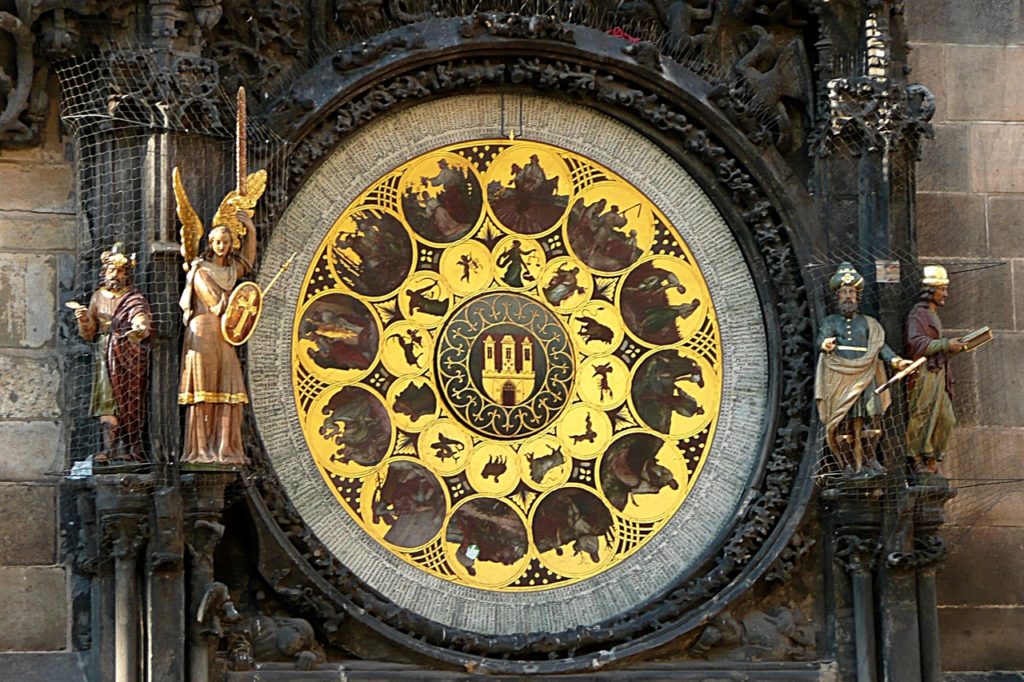
Repairs
Obviously, a
Take it all in
I don’t think you can actually appreciate the size of this clock from the photos. For example, the calendar board disc is more than 2 metres in diameter. It is such an impressive achievement when you consider that it was built in 1410.
For over 600 years, the clock has been an attraction of the city of Prague. It is located on the south side of the Old Town Hall tower in Old Town Square. Since its creation, it has provided countless visitors with entertainment.
You can find a lot more history and details about the clock here: Praguecityline.com
If you liked this post, please share the link with your friends, or pin it on Pinterest! As always, I appreciate your support. Thanks for reading.

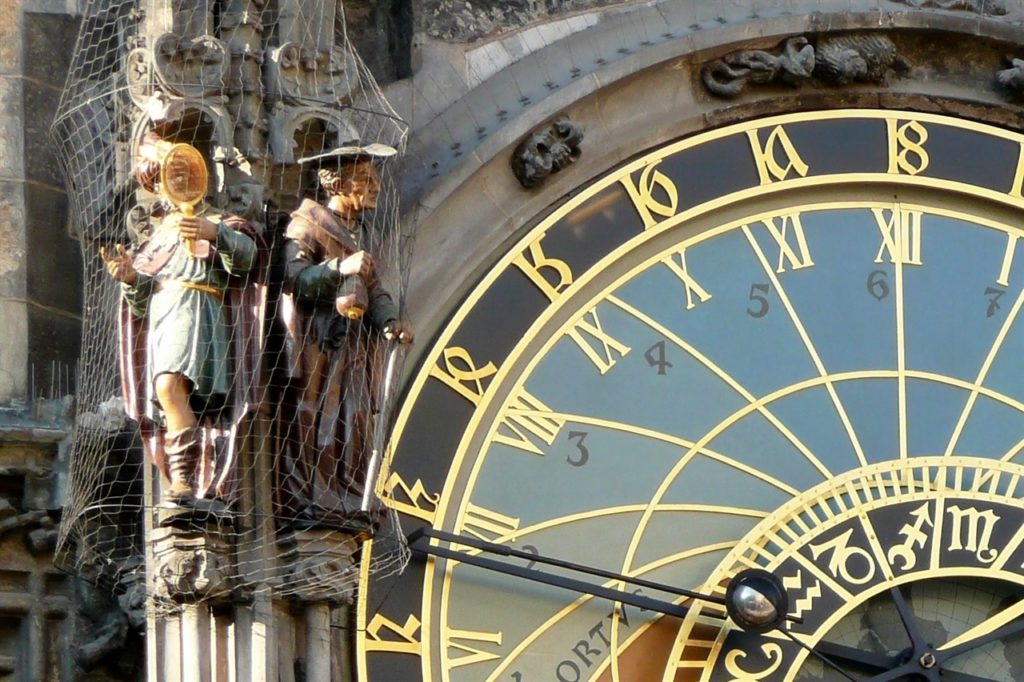
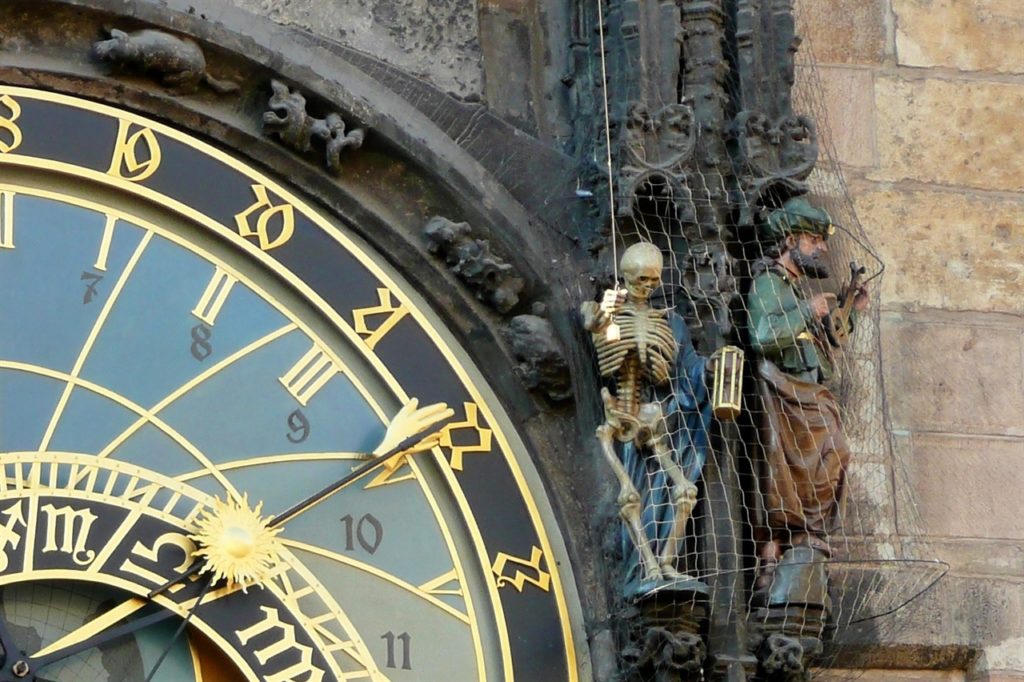
Leave a Reply